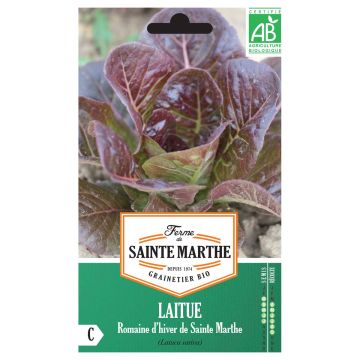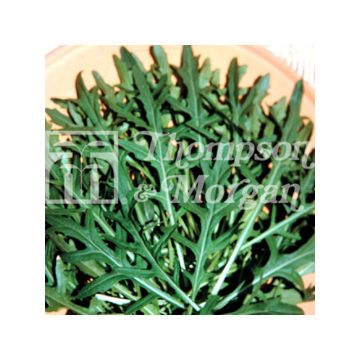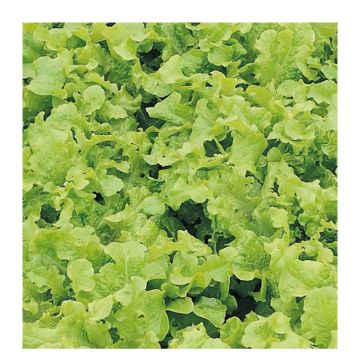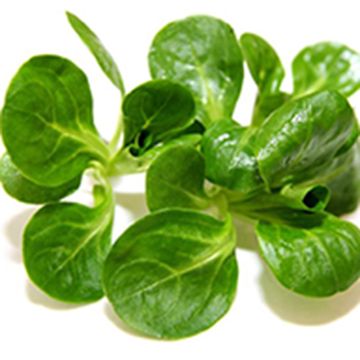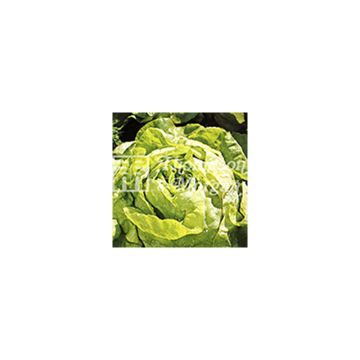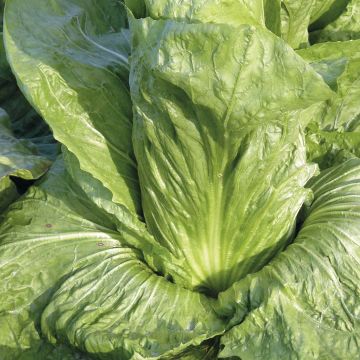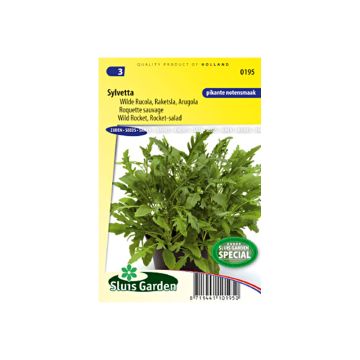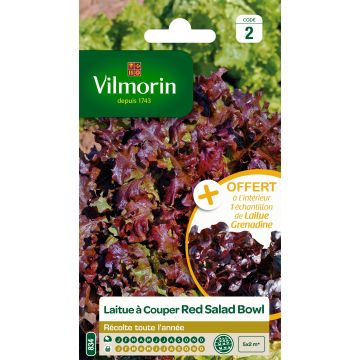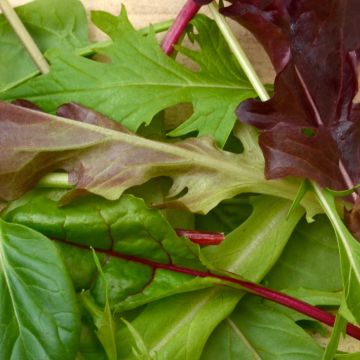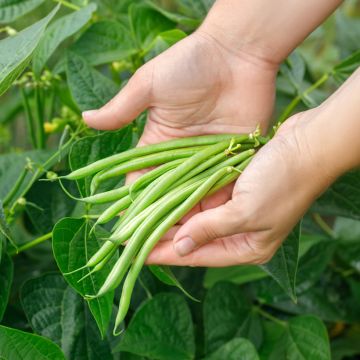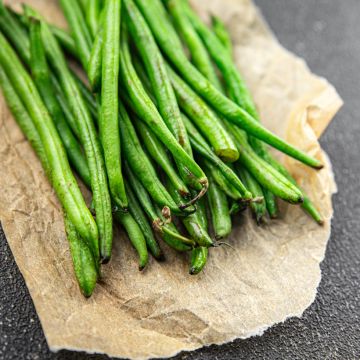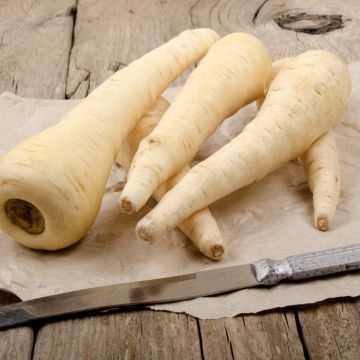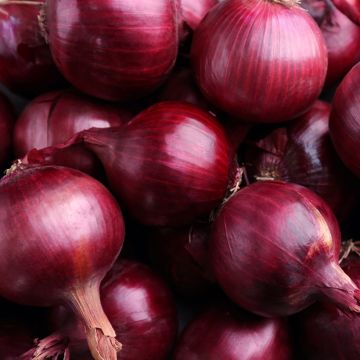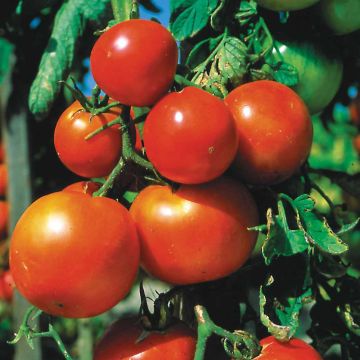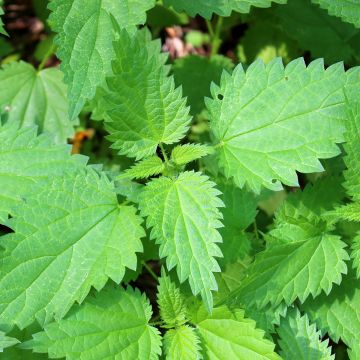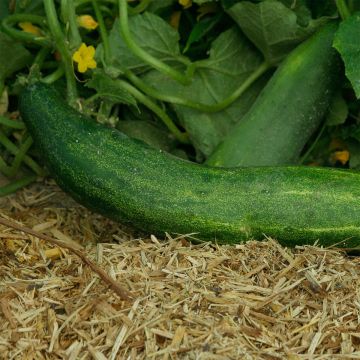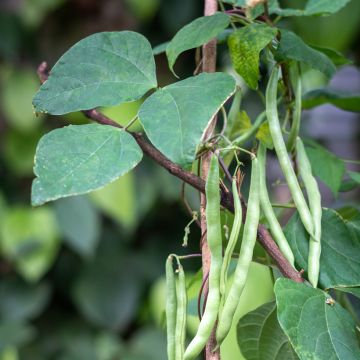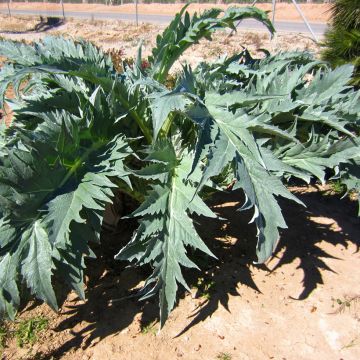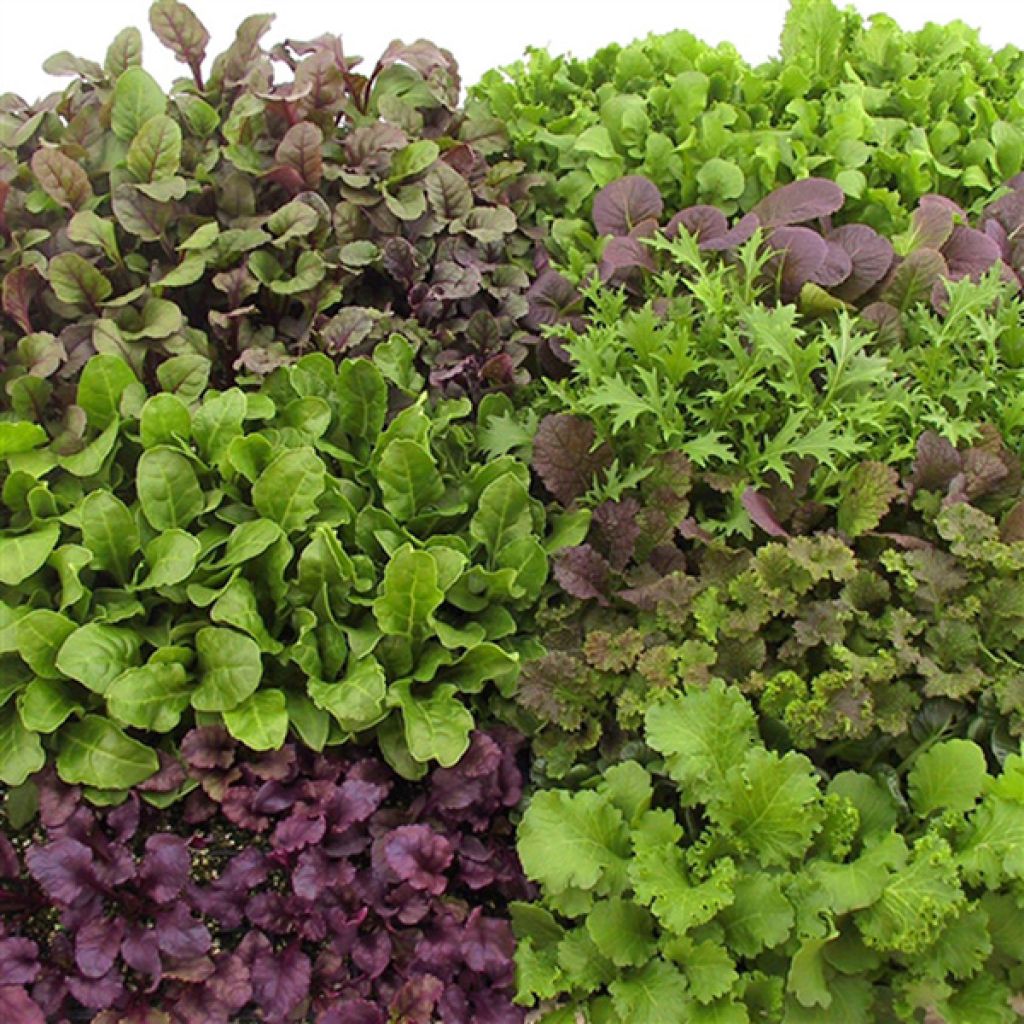

Jeunes pousses en mélanges Bio - Ferme de Sainte Marthe


Jeunes pousses en mélanges Bio - Ferme de Sainte Marthe
Organic Mixed Baby Greens - Ferme de Sainte Marthe seeds seeds
This item cannot be shipped to the selected country
Dispatch by letter from €3.90
More information
Schedule delivery date,
and select date in basket
This plant carries a 6 months recovery warranty
More information
We guarantee the quality of our plants for a full growing cycle, and will replace at our expense any plant that fails to recover under normal climatic and planting conditions.
Seed-only orders are dispatched by sealed envelope. The delivery charge for seed-only orders is €3.90.

Description
The Young shoots in this mix offer an assortment of leafy vegetables combining purslane, arugula, red mustard, red oak leaf, bright lettuce, St. Vincent salad, iceberg lettuce, blood drop batavia, and devil's ear red romaine for a fresh mesclun salad mix. By sowing from March to August in a staggered manner you can harvest from April to November, 3 to 5 weeks after sowing.
Harvest: the leaves are harvested as needed.
Storage: the harvested leaves do not keep for long in the vegetable drawer of your refrigerator (1 to 2 days at most, otherwise they will become soft and lose their taste). It is best to consume them on the same day to preserve their flavour.
Gardener's tip: during hot summer weather, tender young shoots exposed to direct sunlight tend to wither. To prevent this, consider protecting them from intense rays using overturned crates. You can also interplant them at the base of climbing beans, amidst cucumbers and squash, whose foliage will provide them with beneficial shade. And to protect them from slugs and other voracious invertebrates, plant aromatic herbs nearby.
Report an error about the product description
Harvest
Plant habit
Foliage
Botanical data
Western Europe
Annual
Other Salad leaf seeds
Planting and care
Sowing: Germination occurs at a temperature of about 18°C (64.4°F) and takes an average of 10 days
This assortment is sown from March to August and harvested 3 to 5 weeks later, as it grows.
On well-prepared and loosened soil, make furrows spaced 25cm (10in) apart, with a depth of 0.5cm (0in). Sow in rows, spacing the seeds 4cm (2in) apart, and cover. After germination, when the plants are well-developed, thin them out to leave one plant every 30cm (12in).
If your vegetable garden is often attacked by slugs and snails, we recommend sowing under cover, in small pots, and transferring them to the garden when the plants are well-developed.
Cultivation:
These young shoots are not very demanding, but they still require humus-rich soil, otherwise they tend to bolt prematurely. It is advisable to apply a moderate amount of well-rotted compost in autumn, by lightly digging it in to a depth of 5cm (2in), after loosening the soil as you would for any vegetable crop. They prefer slightly acidic to neutral soils (pH between 5.5 and 7.5).
During cultivation, remember that they prefer moist soil and make sure to water them regularly.
These young shoots are good companions: they can easily be grown in between slower-growing vegetables such as beans, tomatoes, cucumbers, etc. Just avoid planting them near corn.
Seedlings
Care
Intended location
-
, onOrder confirmed
Reply from on Promesse de fleurs
Vegetable seeds
Haven't found what you were looking for?
Hardiness is the lowest winter temperature a plant can endure without suffering serious damage or even dying. However, hardiness is affected by location (a sheltered area, such as a patio), protection (winter cover) and soil type (hardiness is improved by well-drained soil).

Photo Sharing Terms & Conditions
In order to encourage gardeners to interact and share their experiences, Promesse de fleurs offers various media enabling content to be uploaded onto its Site - in particular via the ‘Photo sharing’ module.
The User agrees to refrain from:
- Posting any content that is illegal, prejudicial, insulting, racist, inciteful to hatred, revisionist, contrary to public decency, that infringes on privacy or on the privacy rights of third parties, in particular the publicity rights of persons and goods, intellectual property rights, or the right to privacy.
- Submitting content on behalf of a third party;
- Impersonate the identity of a third party and/or publish any personal information about a third party;
In general, the User undertakes to refrain from any unethical behaviour.
All Content (in particular text, comments, files, images, photos, videos, creative works, etc.), which may be subject to property or intellectual property rights, image or other private rights, shall remain the property of the User, subject to the limited rights granted by the terms of the licence granted by Promesse de fleurs as stated below. Users are at liberty to publish or not to publish such Content on the Site, notably via the ‘Photo Sharing’ facility, and accept that this Content shall be made public and freely accessible, notably on the Internet.
Users further acknowledge, undertake to have ,and guarantee that they hold all necessary rights and permissions to publish such material on the Site, in particular with regard to the legislation in force pertaining to any privacy, property, intellectual property, image, or contractual rights, or rights of any other nature. By publishing such Content on the Site, Users acknowledge accepting full liability as publishers of the Content within the meaning of the law, and grant Promesse de fleurs, free of charge, an inclusive, worldwide licence for the said Content for the entire duration of its publication, including all reproduction, representation, up/downloading, displaying, performing, transmission, and storage rights.
Users also grant permission for their name to be linked to the Content and accept that this link may not always be made available.
By engaging in posting material, Users consent to their Content becoming automatically accessible on the Internet, in particular on other sites and/or blogs and/or web pages of the Promesse de fleurs site, including in particular social pages and the Promesse de fleurs catalogue.
Users may secure the removal of entrusted content free of charge by issuing a simple request via our contact form.
The flowering period indicated on our website applies to countries and regions located in USDA zone 8 (France, the United Kingdom, Ireland, the Netherlands, etc.)
It will vary according to where you live:
- In zones 9 to 10 (Italy, Spain, Greece, etc.), flowering will occur about 2 to 4 weeks earlier.
- In zones 6 to 7 (Germany, Poland, Slovenia, and lower mountainous regions), flowering will be delayed by 2 to 3 weeks.
- In zone 5 (Central Europe, Scandinavia), blooming will be delayed by 3 to 5 weeks.
In temperate climates, pruning of spring-flowering shrubs (forsythia, spireas, etc.) should be done just after flowering.
Pruning of summer-flowering shrubs (Indian Lilac, Perovskia, etc.) can be done in winter or spring.
In cold regions as well as with frost-sensitive plants, avoid pruning too early when severe frosts may still occur.
The planting period indicated on our website applies to countries and regions located in USDA zone 8 (France, United Kingdom, Ireland, Netherlands).
It will vary according to where you live:
- In Mediterranean zones (Marseille, Madrid, Milan, etc.), autumn and winter are the best planting periods.
- In continental zones (Strasbourg, Munich, Vienna, etc.), delay planting by 2 to 3 weeks in spring and bring it forward by 2 to 4 weeks in autumn.
- In mountainous regions (the Alps, Pyrenees, Carpathians, etc.), it is best to plant in late spring (May-June) or late summer (August-September).
The harvesting period indicated on our website applies to countries and regions in USDA zone 8 (France, England, Ireland, the Netherlands).
In colder areas (Scandinavia, Poland, Austria...) fruit and vegetable harvests are likely to be delayed by 3-4 weeks.
In warmer areas (Italy, Spain, Greece, etc.), harvesting will probably take place earlier, depending on weather conditions.
The sowing periods indicated on our website apply to countries and regions within USDA Zone 8 (France, UK, Ireland, Netherlands).
In colder areas (Scandinavia, Poland, Austria...), delay any outdoor sowing by 3-4 weeks, or sow under glass.
In warmer climes (Italy, Spain, Greece, etc.), bring outdoor sowing forward by a few weeks.

































